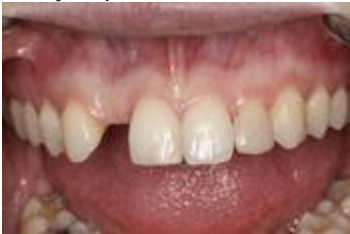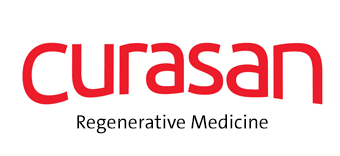
Searching for the right option to help your patients find their smile? Helping them make the best decisions and discussing outcomes? Ridge preservation is something to talk about and curasan can help. We offer patient education in addition to our premium bone grafting options. It is so important to get your patients interested and invested in learning about their options. We want them to know the danger associated with missing teeth, what to expect while walking through this process, and how this loss goes beyond their smile.
Tough Conversations
Who has the one-on-one discussion regarding the emotional baggage that comes along with this loss? The experience and meaning of tooth loss and replacement has varied historically and culturally but has received relatively little attention from social scientists. Studies prove that missing teeth can lead to self-consciousness, feelings of depression, and low self-esteem. This is where you can clearly see your expertise grow beyond its scope of work, you are re-pairing much more than a smile.
Dangerous Effects of Tooth Loss
The most common reason people seek to replace their teeth is aesthetic, especially in a modern society where a healthy smile is viewed as a sign of health and beauty. Since physical appearance affects the way a person feels, there are profound psychological and social consequences associated with tooth loss. Studies prove that missing teeth can lead to being self-conscious, feelings of depression, having low self esteem, and even feeling unable to advance in a career. However, there are many more dangers in missing teeth that affect health and function, other than just the the undesirable sight of them.
Surprisingly enough, it’s not so much about the teeth as it is about the bone, which needs to be properly stimulated to maintain both form and density. Particularly affected is the alveolar bone which surrounds and supports the teeth and requires necessary stimulation directly from the teeth themselves. Throughout the day, the teeth are making hundreds of sudden and momentary contacts with other teeth. These frequent contacts between the teeth are transmitted through the periodontal ligament that holds each tooth in its socket, promoting the bone to remodel and rebuild continually. Once a tooth is lost, the lack of friction with the alveolar bone is lost, causing the bone to lose its external width first, then height, and ultimately the bone volume.
The rate at which bone width decreases is faster than one would think, at 25% within the first year after the tooth is lost and within the first few years, an overall 4 millimeter decrease in height is expected. Furthermore, gum tissue is at risk of reducing as the bone loses its width and height. As bone and gum tissue both decrease, the first side effect is difficulty chewing paired with impaired speech. As more teeth are lost, the more function is lost. If left unattended the problems only worsen and can lead to serious aesthetic and functional problems, especially in those that are completely without teeth.
Unfortunately, the consequences of missing teeth don’t stop there and the bone underlying the alveolar bone, the basal bone, becomes affected. The basal bone begins to resorb or melt away, resulting in a decrease in the distance between the nose and the chin length. With the decrease in the nose to chin length, the bottom third of the face partially collapses. The chin begins to shift forward and upward in motion, and without the support of the teeth, the cheeks become hollow and sunken. If too much bone is lost in an extreme situation, the jawbone decreases more and more and the person becomes more at risk to jaw fractures.
Other risks include “bite collapses,” which occur when only some of the back teeth are missing. Since these teeth support the height of the face, the result is the front teeth are forced forward or crowded together. Front teeth were only designed to hold or tear food, but not to chew it nor support the facial height. Those that are completely toothless often appear with a permanent frown when their mouths are at rest since the lips have also dropped, due to the lack of support by teeth and gum tissues. The tongue will spread into the spaces where teeth once were and the face essentially collapses. Ultimately, there is no hiding extreme tooth loss, and it can really take a toll on one’s self confidence.
Tooth Loss Timeline: What to Expect
Statistics tend to be shocking when it comes to how many people are challenged by missing teeth. Reportedly, 70% of the United States population is missing at last one tooth, most commonly a back tooth. The first permanent teeth to enter into our mouths, the 6-year molars, are also the first to be lost as a result of fracture, decay, or failed root canal. Adding to the problems, is the fact that these teeth are often crowned, yet are still susceptible to recurrent decay. Dental crown longevity varies on a wide scale, but the mean life span is around 10.3 years. At 30 years there is a 20% failure rate. Consequently teeth that have been restored heavily and those that have been root canal treated are not only susceptible to recurrent decay, but to structural failure or fracture, and infection. All of these complications make these teeth to be at higher risk for extraction and are the primary causes for posterior tooth loss in adults.
In more recent years, the most common practice for the replacement of a single back tooth was a three-unit fixed partial denture (FPD), known as a fixed bridge. Although the most widely used, this method is not necessarily the best option. With a fixed bridge, the abutment teeth, are both crowned and together these crowns support a false tooth or “pontic” in the middle. A major benefit to FPDs is that this type of false replacement can be fabricated in a short amount of time, roughly one to two weeks, resulting in pretty immediate restoration to the facial shape and function during eating, talking, and smiling. Additionally, comfort, aesthetics, and health are simultaneously restored and ultimately all problems associated with the tooth loss are resolved. These positive outcomes have led FPDs to the the chosen treatment for the past 60 years. The dental community widely accepts their use, are well familiar with them, and knows when and how to use them. FPDs are also commonplace among the public as well as the dental community.
However, despite all of these positive aspects, the results of FPDs are not constant over time. Often times, if they are not well cared for and maintained, the pontics will serve as deposits for bacterial biofilm, resulting in the decay of the abutment teeth. Once these teeth begin to decay, they become more at risk of structural failure, making their potential for being lost quite likely. Statistically, rates for losing the abutment teeth of FPDs may be as high as 30% within 14 years. The need to replace FPDs over time, combined with the risk of loss to an abutment tooth or teeth, are two unfavorable conditions of the treatment, which have led to the development of dental implants, a more long term solution.
As a pioneer and global technology leader in the growing field of regenerative medicine, curasan specializes primarily on biomimetic bone grafting materials for dental, oral/maxillofacial, orthopedic, and spinal applications. We develop and manufacture biomaterials and medical devices in the field of bone and tissue regeneration, wound healing, and osteoarthritis therapy. We have a strong reputation on delivering outstanding customer service and providing top quality products around the globe. To learn more about our products and how to incorporate them into your business with our easy ordering process, we’d love to chat.
